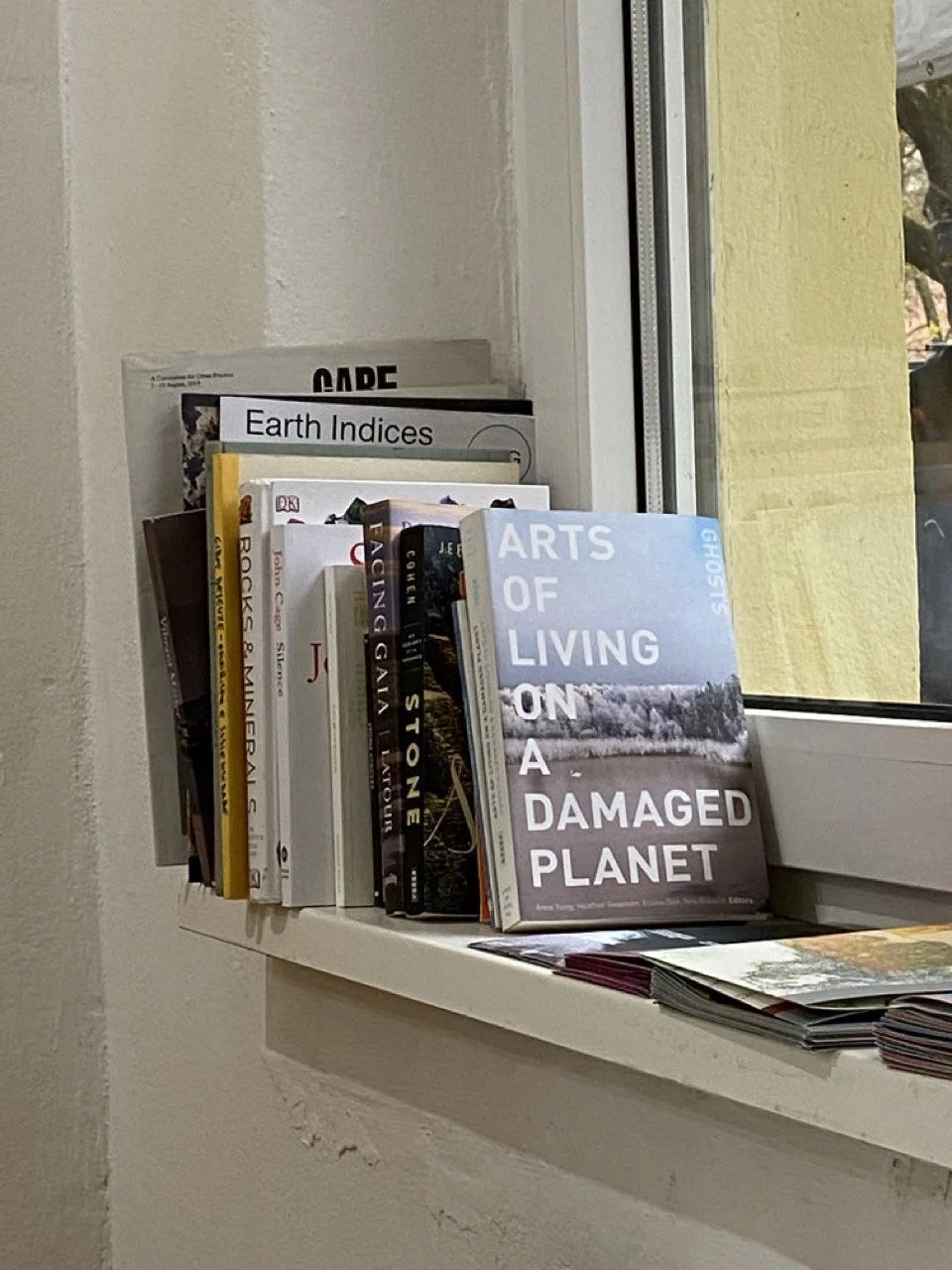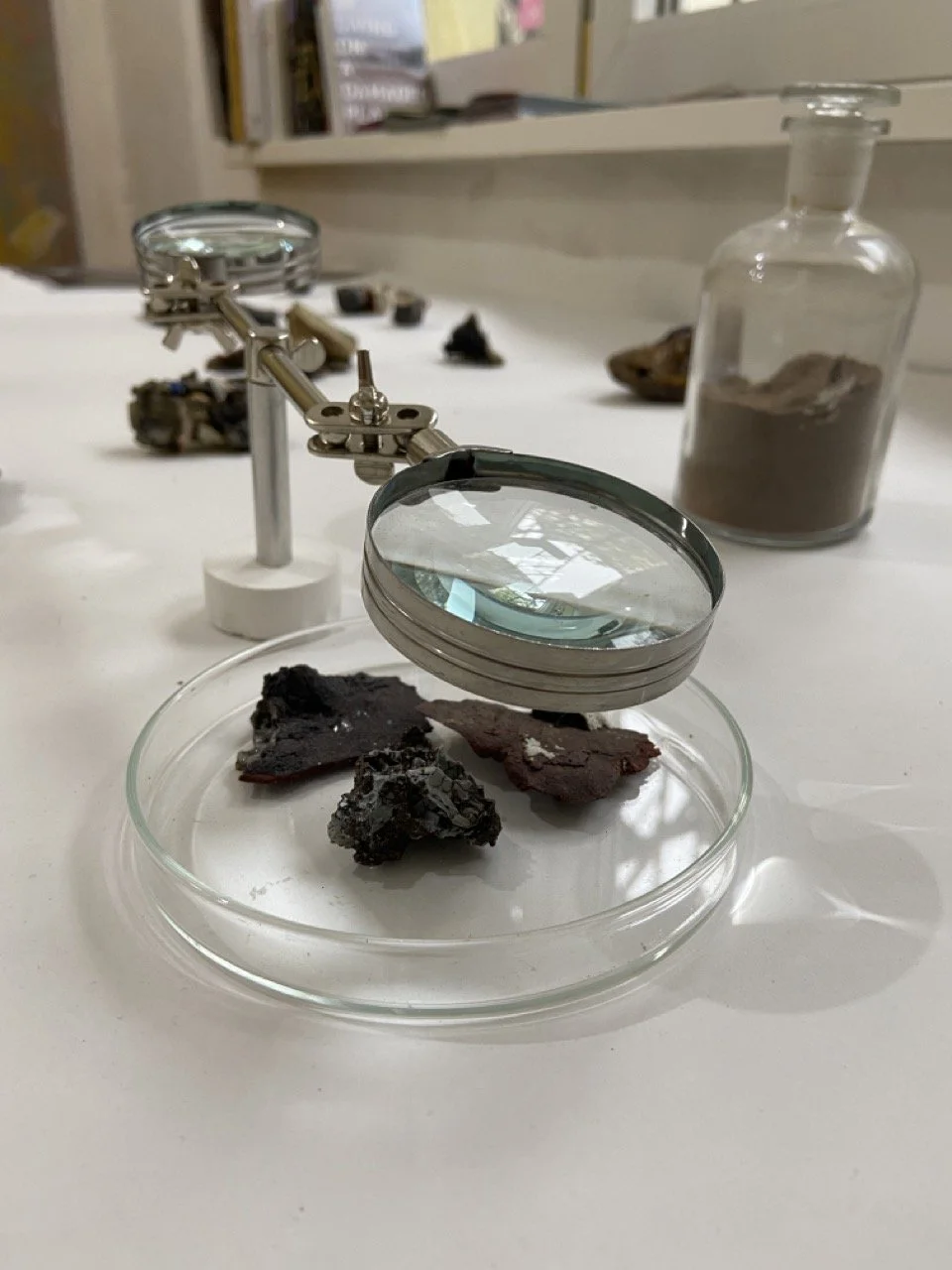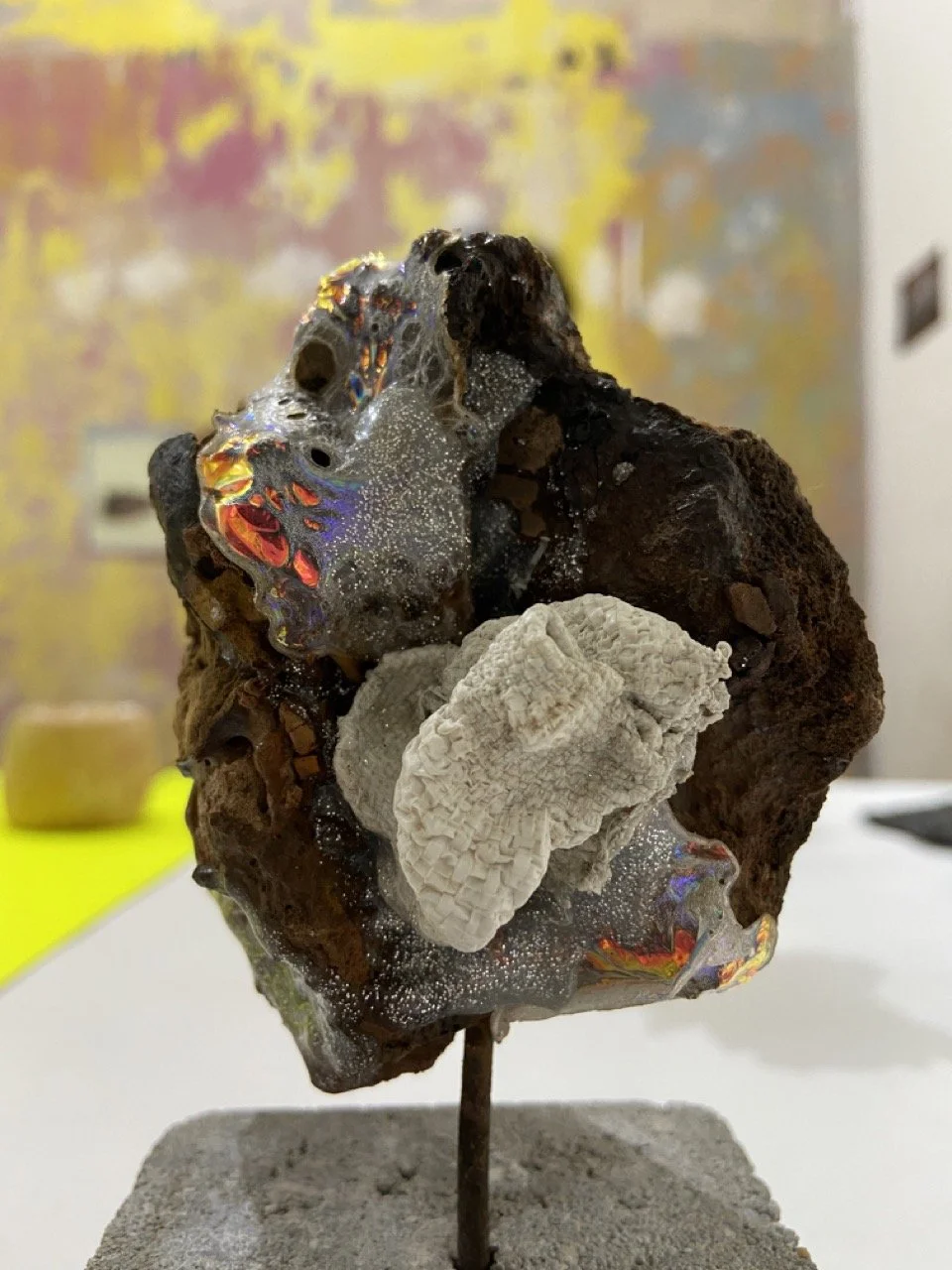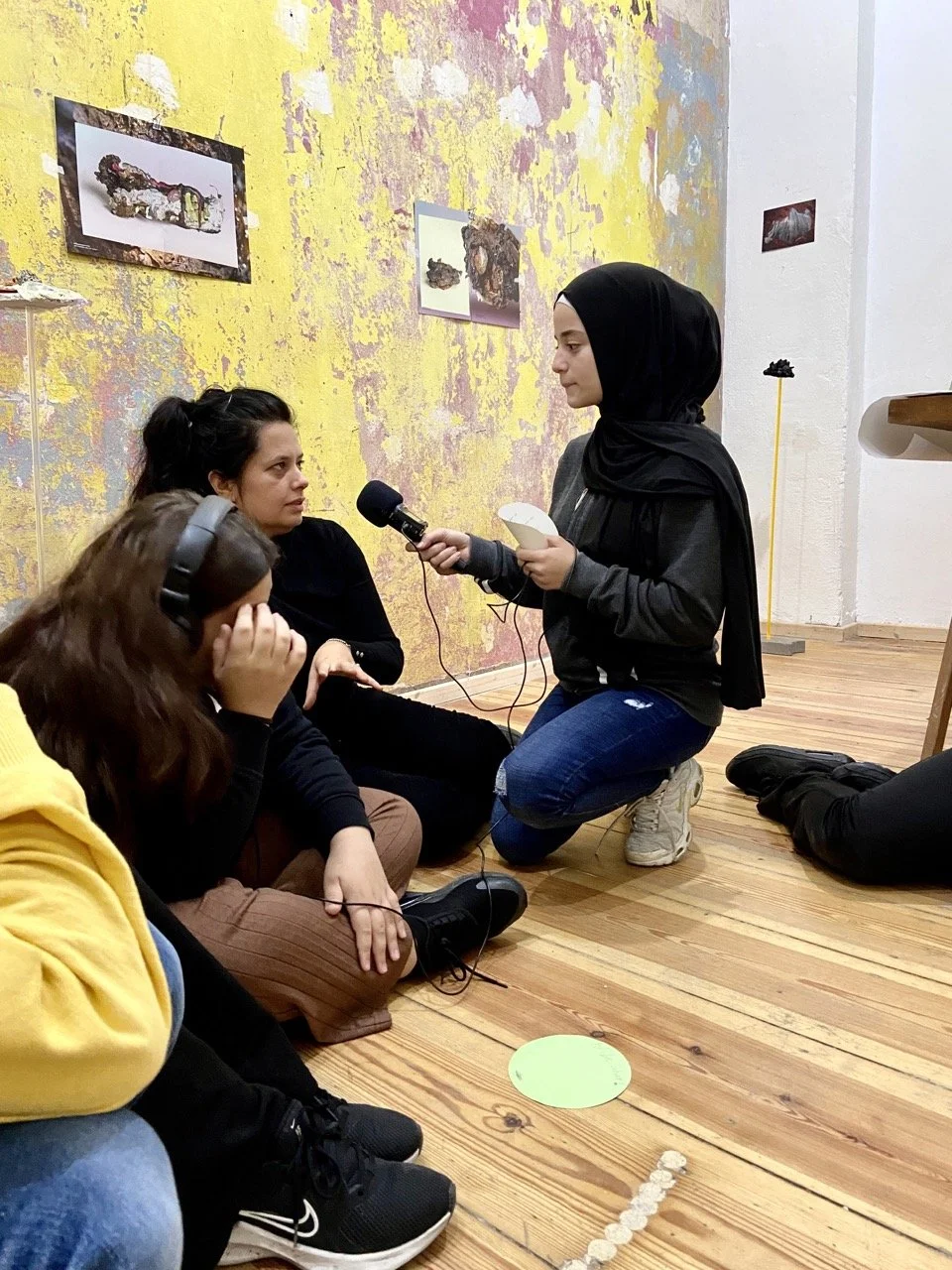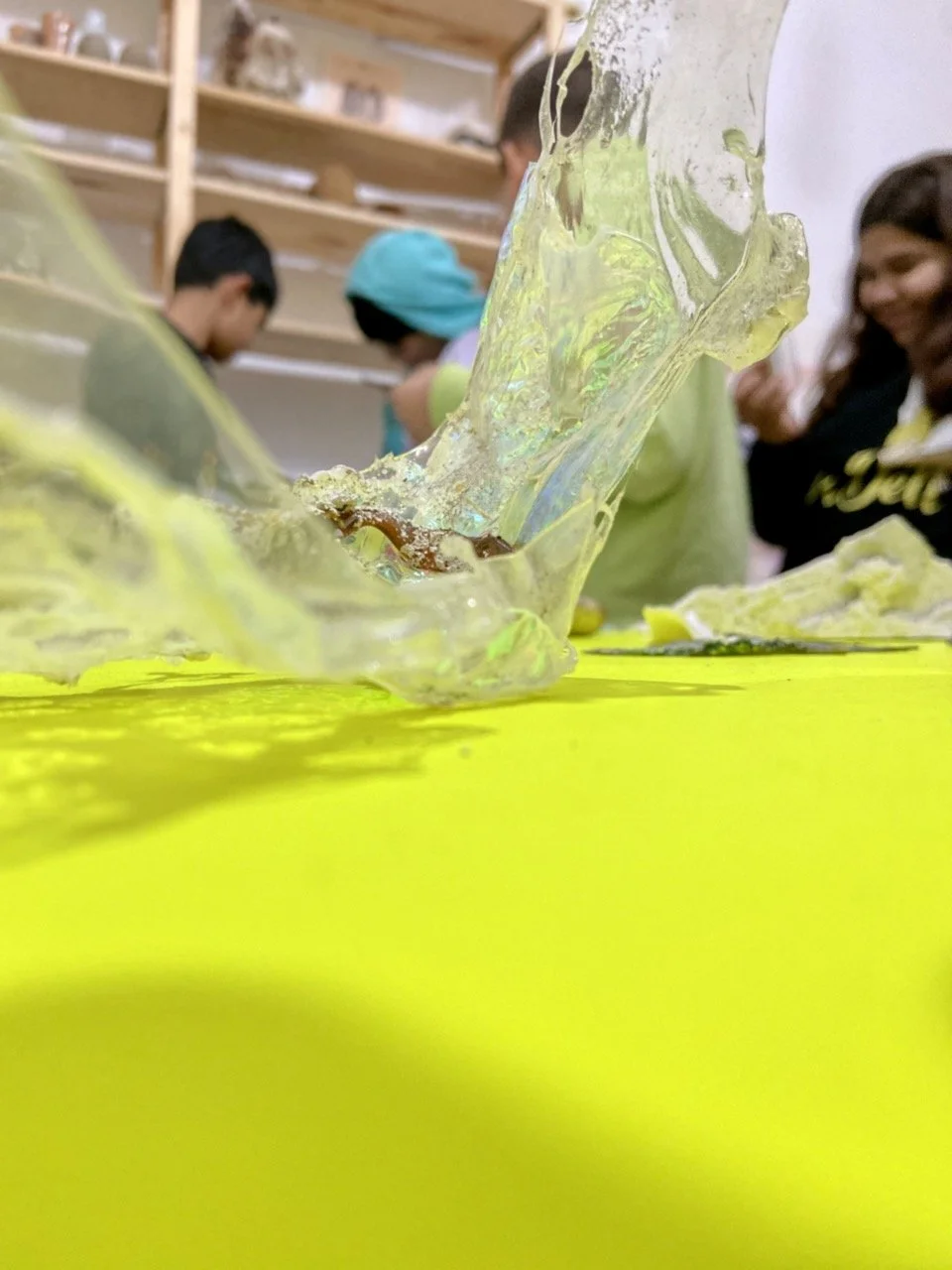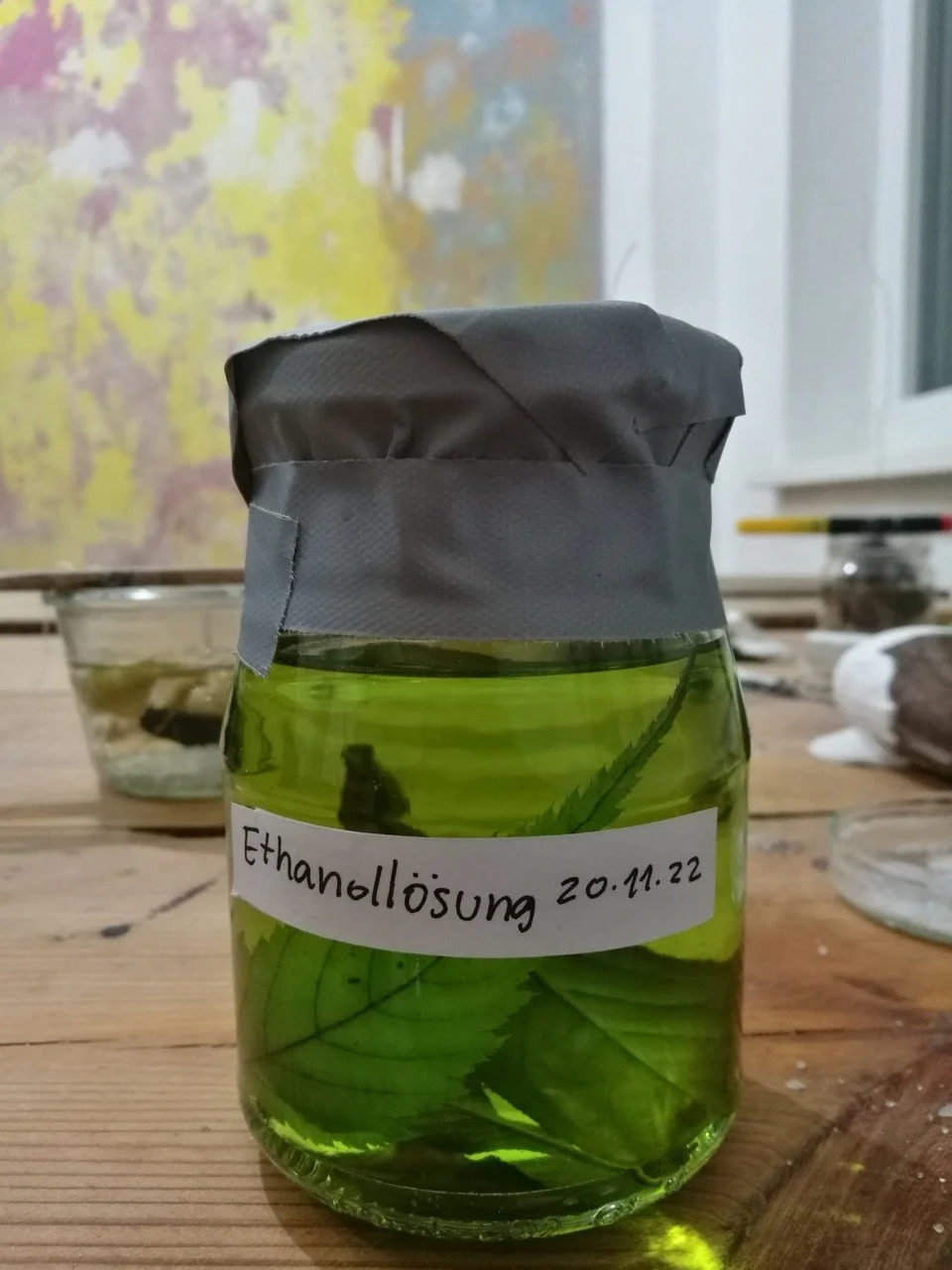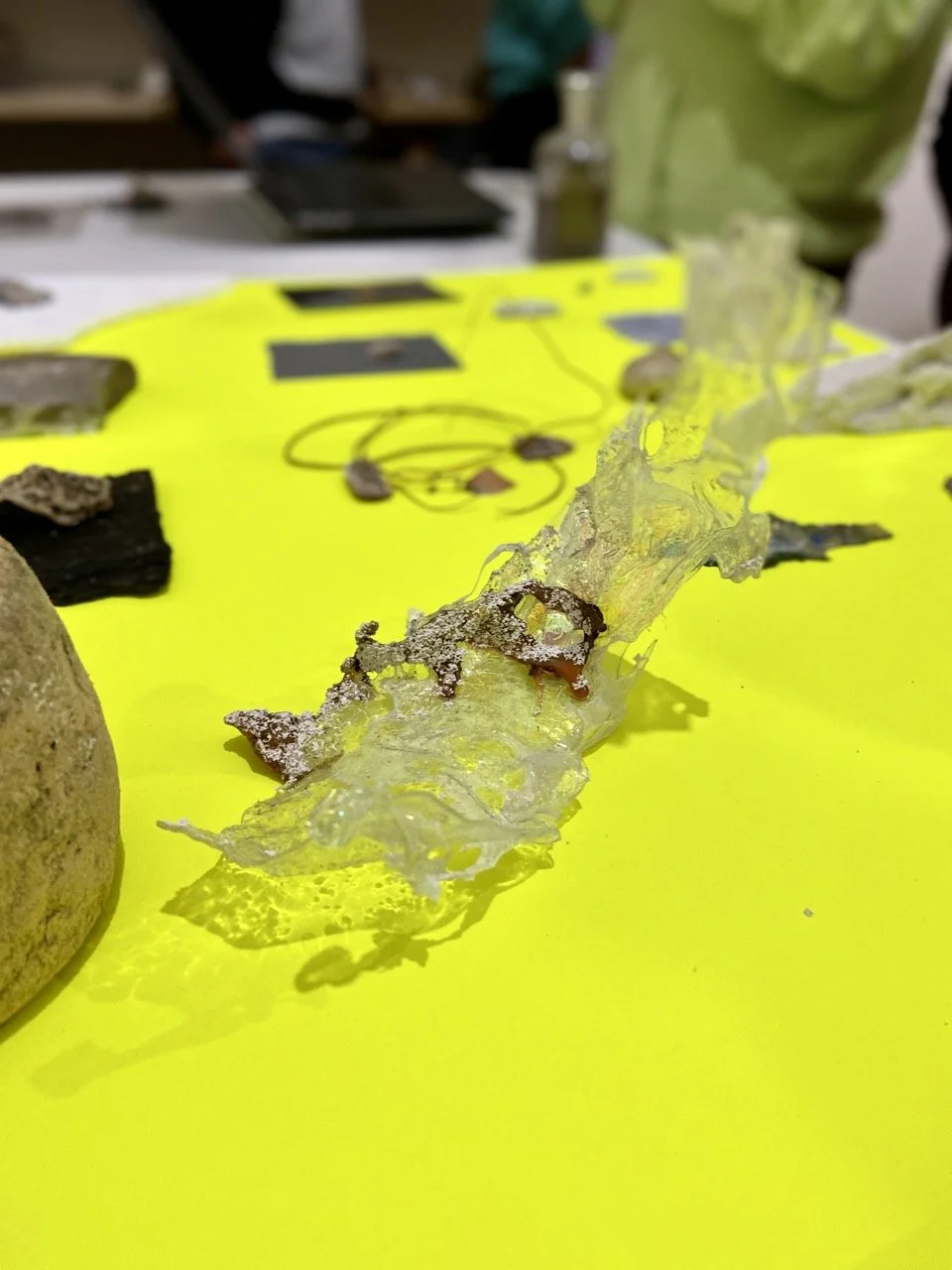Silvia Noronha’s Stones of the Future
We can easily walk to Silvia Noronha’s studio in the middle of Neukölln, because it is just around the corner from our school. The studio is divided up like a small flat - three rooms, kitchen, bathroom - which Silvia shares with two other artists.
Silvia’s studio room looks like a mixture of treasure chamber and laboratory: stones in different colours and shapes sparkle everywhere. Glass that appears to be liquid and then solidifies again stretches across the table past glass vials filled with mysterious sand. Next to them, magnifying glasses bend over glass bowls to take a critical look at their contents. We scurry around the studio, are even allowed to touch most of the things, and pester Silvia directly with our questions: Where do the stones come from? Why are they so colourful? And what is Silvia doing there in the video running on her laptop?
She reveals one of the stories behind the various groups of stones: the video shows Silvia in Brazil (where she was also born), in the village of Bento Rodrigues. There, a few years ago, a dam broke that originally served to hold back a concentrated slurry of toxic mining waste. The collapse of the dam released the poisoned water into the surrounding nature, causing the world's second worst environmental disaster of its kind. Silvia examined the soil mixed with the toxic mass on site and turned it into stone under high pressure and particularly hot temperatures (in real nature, this process takes place deep below the earth's surface and takes a very, very long time). In this way, she has produced stones of the future that no longer contain only natural, but also man-made, artificial components - i.e. the toxic broth. This explains why the stones in Silvia's studio are so colourful. Besides the natural disaster in Brazil, they depict what we find on earth today: Some stones have plastic, glass or other material melted into them. Silvia explains to us that stones will probably look like this or something similar in the future, because these materials find their way into the earth everywhere nowadays. That's why she finds stones so fascinating: they function like memories of our history, our everyday life and the things that surround us. And if perhaps in a few trillion years there are no more people living on Earth and the planet is discovered by aliens, they can - if they are very clever - retell our story using the stones.
Silvia loves to experiment with different materials. For her, an experiment is a process in which something completely different can come out in the end than what you actually expected. But the result can be just as beautiful or interesting or even more beautiful than what it should have been. This is how art works for Silvia: A lot of it has to do with an openness to what we produce in collaboration with the material world.
We are also allowed to experiment now and collect different things in Silvia's backyard: paper scraps, stones, leaves and sticks are placed in a salty liquid with Silvia's help. She explains how the salt will be deposited on the objects over time and how very different crystals will be formed! We quickly realise that experiments often require not only different materials, but above all a lot of patience. But Silvia promises us that we will get our crystals at the end of the project. She herself is already excited to see what they will look like. Just as rocks store the history of mankind and scientists can use them to look into the past, the crystals will be a memory store for our visit to Silvia. For sure they will look beautiful... and sparkle!

